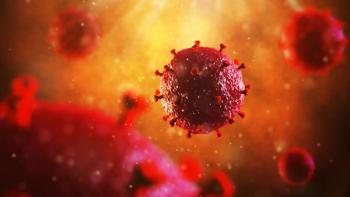
New HIV Drugs Now in the Works
Eleven new drugs for HIV representing 5 new categories of mechanism of action are now in various phases of clinical trials. Here's an overview.
A
Most new HIV drugs with new categories of mechanism of action are being developed as add-on therapies or for use during treatment interruption. Currently, 11 new drugs representing 5 new categories of mechanism of action are in clinical trials.
o Histone deacetylase (HDAC) inhibitors are being designed as latency reversal agents to decrease the viral reservoir, and to activate latent cells so that the immune system can clear the virus.
o Gene therapies target phases of the HIV life cycle; they may enable long-term ART interruption and decrease ART side effects and treatment fatigue.
o Broadly neutralizing anti-HIV antibodies have the potential for use in HIV therapy and prevention, are long-lived, and can neutralize the majority of HIV-1 strains. Studies suggest the potential to drive viral resistance.
o Immune modulators like interferon have the potential to use the innate immune system to eliminate HIV; these may lower HIV RNA during treatment interruption, but may not have long-lasting effects.
o Drugs with new mechanisms for early Inhibition of HIV entry may treat patients with multidrug-resistant HIV.
Histone Deacetylase (HDAC) Inhibitors
• Designed as a latency reversal agent to decrease the viral reservoir:
Activate latent cells to allow the immune system to clear the virus
• Most trials have been small and short duration, no serious side effects reported
• Studies suggest may be useful in combination therapy with ART immune non-responders
HDAC Inhibitors in Clinical Trials
• Vorinostat (Merck): pan-HDAC inhibitor
FDA approved in 2016 for treating T-cell lymphoma
Several phase 1 trials are recruiting to study vorinostat plus other latency reversal agents (disulfiram, AGS-004, and HXTC)
• Panobinostat (Novartis): pan-HDAC inhibitor
FDA approved in 2015 for treating multiple myeloma
Black box warning: severe diarrhea, severe and fatal cardiac ischemic events, severe arrhythmias, ECG changes
• Romidepsin (Celgene): selective HDAC inhibitor
Approved in 2009 for treating T-cell lymphoma
Two phase 2 trials in progress, due for completion August 2017 and January 2019
• Chidamide (Chipscreen Biosciences): selective HDAC inhibitor
Approved in China for treating peripheral T cell lymphoma, not approved in the US
Phase 1/2 study completed in 2016, results yet to be published
Phase 2/3 study comparing efficacy in combination ART currently enrolling
Gene Therapies
• Target phases of the HIV life cycle, may enable long-term ART interruption
May decrease ART side effects and treatment fatigue
• ABX464 (Abivax): blocks the HIV transacting protein Rev, interferes with HIV replication
Two phase 2a studies are being planned for Abivax in combination with standard ART
• SB-728-T (Sangamo Biosciences): disrupts CCR5 expression to make CD4+ cells resistant to HIV entry
• VRX496T (Lexgenleucel-T): HIV-based lentiviral vector targeted to the HIV envelope coding sequence
An ongoing trial is evaluating Lexgenleucel-T during treatment interruption, planned follow-up until 2020
Broadly Neutralizing Anti-HIV Antibodies (bNAbs)
• Isolated from elite neutralizers, potentially for use in HIV therapy and prevention
• Long-lived, can neutralize majority of HIV-1 strains
Will likely need multiple bNAbs with different targets for the HIV envelope protein
• Phase 2 studies show mixed results for suppression of viremia during treatment interruption, potential to drive viral resistance
• VRC01: targeted against the HIV-1 CD4+ binding site antibody
• 3BNC117: targeted against CD4+ binding site of HIV-1 Env1
Immune Modulators
• Strategy: use the innate immune system to eliminate HIV
Several trials suggest interferon resulted in lower RNA rebound than non-interferon during treatment interruption, results not maintained over time
• Pegylated-Interferon-α2a and b:
FDA Approved to treat chronic Hepatitis C
Two ongoing phase 2 studies of peg-IFN-α2b as add-on therapy due for completion in July and August 2018, results not available yet
New Mechanisms for Early Inhibition of HIV Entry
• May treat patients with multidrug-resistance HIV
• Fostemsavir (BMS-663068, ViiV Heathcare): inhibits entry via gp120, prevents binding and attachment to CD4+ cells,
Targets CCR5, CXCR4, and dual-tropic strains of HIV (existing therapies only target CCR5)
Phase 3 trial ongoing to test efficacy in multi-drug resistant HIV
• PRO140 (CytoDyn): humanized CCR5 monoclonal antibody with activity against CCR5-tropic HIV,
Being studied mainly in ART experienced patients
Currently in phase 2 trial
More Research Will Define Specific Use of New HIV Drugs
“Each of these new drugs may potentially fill a void in our current ART therapies, which will help increase the number of individuals who are able to achieve an undetectable viral load and ultimately lead to improved outcomes in these individuals. With continued research, the specific use of each of these agents will be better defined and established within our current treatment algorithms,” first author Leigh Anne Hylton Gravatt, PharmD, Virginia Commonwealth University (Richmond, VA), and colleagues
References:
1. Gravatt LAH, Leibrand CR, Patel S. et al. New drugs in the pipeline for the treatment of HIV: a review.
Newsletter
Enhance your clinical practice with the Patient Care newsletter, offering the latest evidence-based guidelines, diagnostic insights, and treatment strategies for primary care physicians.



















































































































































































































































































